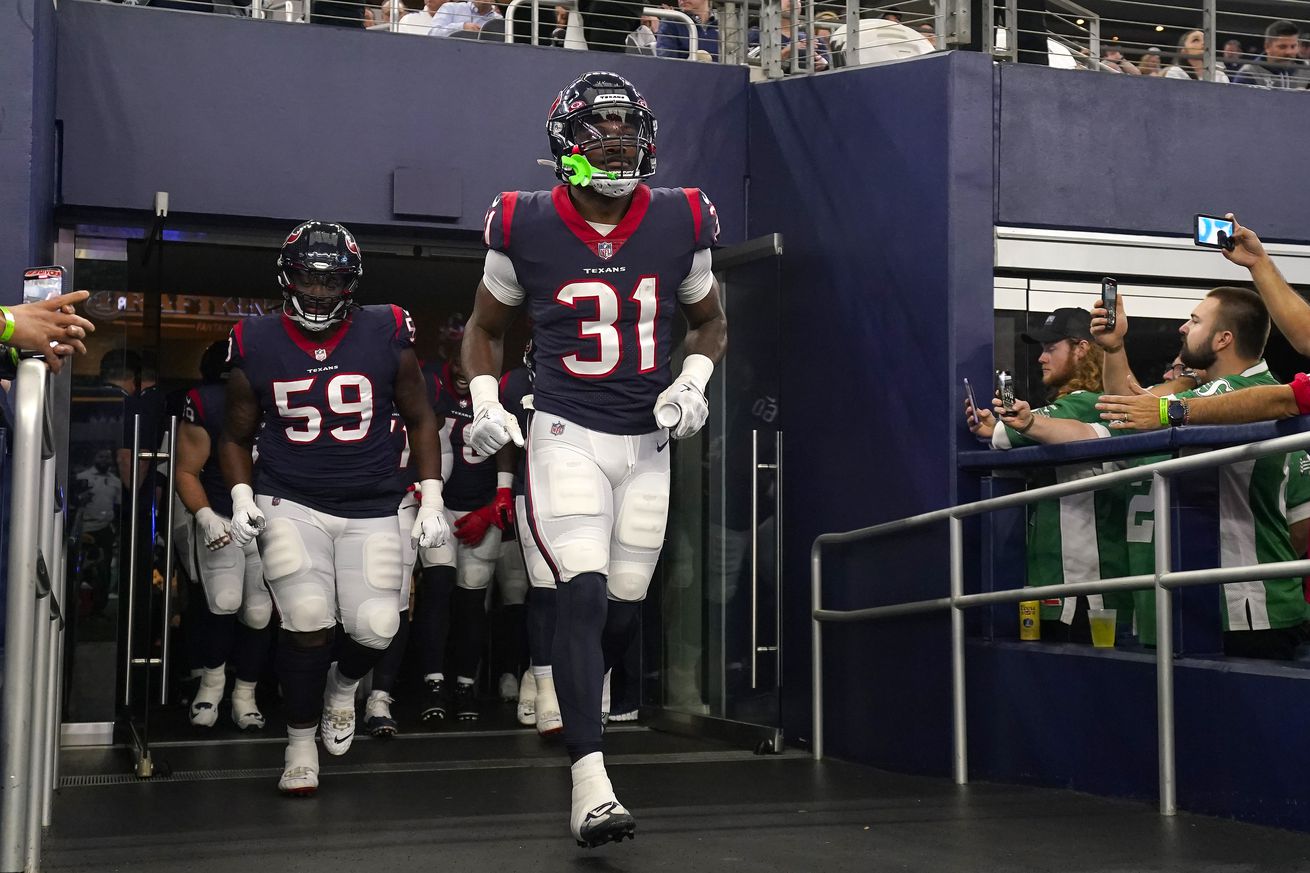
How close are the Texans to having an average running attack?
As we go through the different position groups on the team, we are determining where they are in relationship to the average. Of course, there are any number of ways that we can do that. We are most concerned with the running attack as a whole, but we will also look at individual backs.
In general, most teams employ two backs fairly heavily. So, focusing on the primary back is often misleading. We will look at overall team performance and then team performance based on the two best backs. In those cases, we can look at both rushing and receiving out of the backfield. We know Dameon Pierce was very good, but how good were the other backs on the roster?
League Wide Numbers
In this case we will look at the Houston Texans overall numbers, where they rank amongst the 32 teams. and how close they are to the league average. We will look at number of carries, yards, yards per carry, and touchdowns. Remember, this will only be on the rushing side of things.
Carries— 398 (30th)
Average— 461.6
Yards— 1,476 (31st)
Average— 2,059.2
Yards Per Carry— 3.7 (31st)
Average— 4.5
Touchdowns— 7 (31st)
Average— 15.2
This is really very simple. We were told that the Texans were going to be a physical running team last year. Is there anything in the numbers above that would indicate that? We can complain about Davis Mills and Pep Hamilton but ultimately, the running game was a failure. In fact, you could argue that as it compares with the league, Mills was closer to league average than the Texans collective running game.
A lot of people focus on Kyle Shanahan’s success with quarterbacks, but it is really in the run game where he shines. The San Francisco 49ers were seventh in rushing yards, fifth in rushing TDs, and eighth in yards per attempt. Can Bobby Slowik get the Texans closer to that point? This is where looking at the individual guys might make more sense.
Top Two on the Depth Chart
We can add a little here. We will add the number of receptions the two best guys got out of the backfield along with average yards per catch and touchdowns. This will allow us to look at total touches, total yards from scrimmage, and then total yards per touch. We will put the league average in parenthesis next to the Texans’ rank in that category.
Carries— 262 (26th) (315.5)
Yards— 1,062 (30th) (1430.8)
Yards Per Carry— 4.1 (27th) (4.5)
Touchdowns— 5 (28th) (10.2)
Catches— 67 (12th) (62.8)
Yards— 369 (24th) (457.7)
Yards Per Catch— 5.5 (31st)
Touchdowns— 2 (13th) (2.4)
Total Touches— 329 (22nd) (378.3)
Total Yards From Scrimmage— 1,431 (28th) (1888.5)
Yards Per Touch— 4.3 (32nd) (5.0)
Total Touchdowns— 7 (28th) (12.6)
The Texans actually demonstrated that they were better at catching the ball out of the backfield than most teams. However, they didn’t turn those catches into yards. Of course, when one of the main receivers is Rex Burkhead, you aren’t going to generate a ton of yardage. That brings us to the yards per touch average. You could argue that is the most important statistic here and it is the worst one.
For those that know statistics, you know that the mean isn’t always the most helpful thing. Often times, one or two scores pollute the whole study as they drive scores up or down. So, we also look at the median to give us a better idea of what is going on. If we pour over the individual results, we see that 19 teams had their top two backs (or rushers) gain 1,300 yards or more. 18 teams saw those backs gain 4.6 yards or more per carry. 17 teams had nine touchdown runs or more between those two carriers. 17 of them accounted for 11 total touchdowns or more between the top two backs. 20 teams had 1,800 combined yards or more.
For what it’s worth, those numbers might be more telling than the numerical average. Obviously, a whole lot goes into making sure running backs and the running game are successful. We have to consider the blocking up front. We have to consider the scheme. Obviously, the two back numbers show that depth is more important than individual brilliance. With the exception of a few teams, it was very much a running back by committee approach. The Texans are off to a better start through the addition of Devin Singletary. Do they need to add anyone else?
Getting to 1,300 yards rushing, 1,800 total yards, or 11 touchdowns might not seem like tremendous improvement. It’s not. It’s incremental in nature, but four more touchdowns in 28 points. If the passing game makes a similar jump you are talking about another 50 points scored or more. Then, if the defense makes similar incremental improvement and suddenly you are talking nearly 100 points in total differential. That probably gets you into the six or seven win category. I think most people would be satisfied with that kind of improvement.